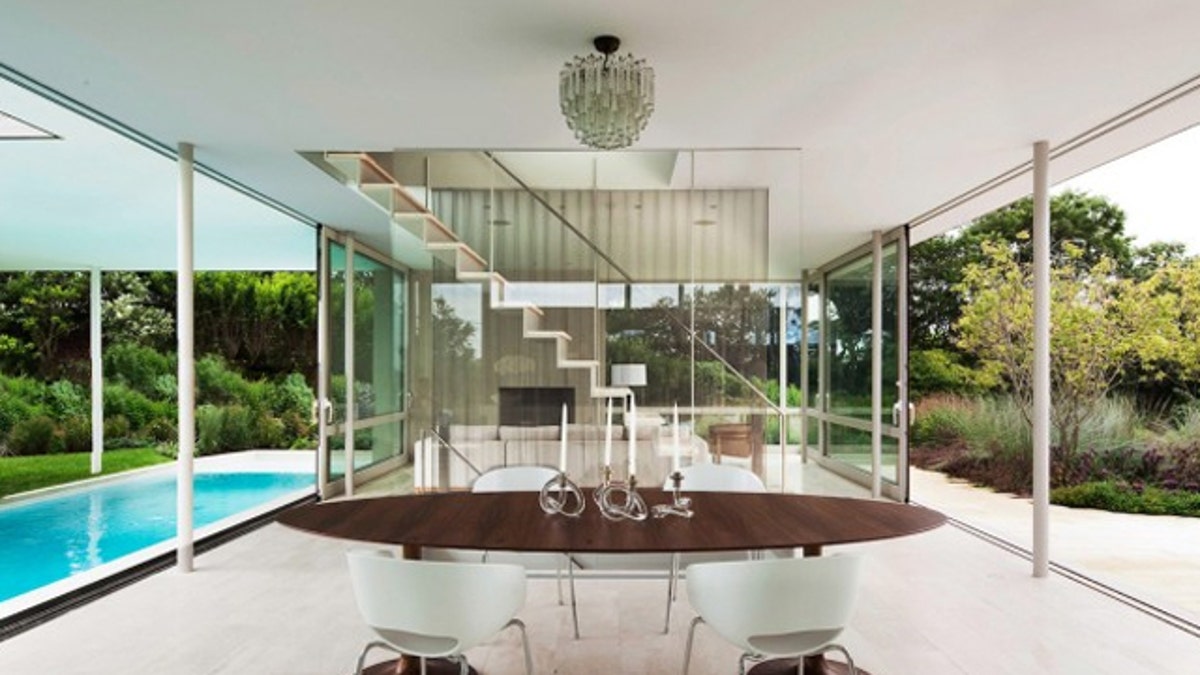
(Houzz)
In the classic 1977 book A Pattern Language, Christopher Alexander and others offer more than 250 "patterns" learned from traditional architecture and research towards the betterment of towns, buildings and construction. The still-influential book gives architects and laypeople guidelines for building better houses.
Pattern number 159 — Light on Two Sides of Every Room — purports that the success or failure of a room is determined by the arrangement of daylight. Based on observations of people in buildings with rooms of varied lighting conditions, the authors conclude that light on two sides creates a better social atmosphere.
PHOTO GALLERY: Light Up a Room From Two Sides
Over three decades later we can extend their argument to include the benefits toward green building, namely in the reduced need for artificial light and the ability to naturally ventilate a space.
Whatever the reasoning, providing windows on two sides is not always easy or even possible. Think of infill houses in cities or apartment buildings in high rises. It also can be more expensive to execute a house with ins and outs versus a simple rectangular plan.
An ideal, in my mind, would be an L-shaped plan that defines and outdoor space and is laid out with rooms shallow enough to have flow-through ventilation. The following examples run the gamut with different spaces, styles and lighting effects that can be said to follow Pattern 159.
A narrow floor plan — one room deep — is the best way to get light from two sides. Glazing on opposite sides draws light from two directions, tracking the sun as it moves across the sky. It also is ideal for ventilating a space. This example is extreme, with full-height glazing and operable glass walls. The light is so even that the dining room feels like it is outside.
Another way to bring light in from two directions is by opening the living spaces into one large room, as in this example. A look inside reveals that light also comes from behind the kitchen — at third wall, at left — and a skylight in the middle of the large living area. All of the light sources combine to make an evenly lit interior where comfort can be found in various places, not just next to the windows.
In this double-height space off of a pool, light comes in both low and high— through sliding glass walls and windows above on one side, and through glass doors and clerestories on the other side. One can nearly feel the breeze moving through the space.
This long, bar house features sliding glass doors on both sides that bring fresh air into the different spaces, just as light enters the house. An added benefit is the view of the river (to the left of this photo) that is available to every room in the house.
Not all houses with light on opposite sides need be modern glass boxes. This fairly rustic house features rooms with sliding doors opening to the yard, opposite operable windows. With light on two sides of the dining room table, people are illuminated, and one can "read in detail the minute expressions that flash across people's faces," as Alexander and company assert.
It's not always possible to incorporate light on two sides of a room, especially light on opposite sides. In high-rise city living that is one reason corner units are so prized. The rooms, typically living rooms, that occupy the corner become the most popular. Light is a strong attractor, but so is the wide view afforded by the perpendicular windows.
There is no hard and fast rule about the amount of a glass versus the size of the room, though many of the examples featured here err on the side of too much light, combined with shades or other techniques for controlling light. This small seating area features plenty of windows and light, even a third source in the clerestory above the wall at left.
This photo shows that even inserting a relatively small window (in the center of the photo) strengthens a space. Combined with the built-in bench, it creates a nice seating area that anchors the far end of the living room.
Dining rooms are ideal for corners with windows on two sides. And with today's open plans, that means the kitchen also receives more sunlight. In this example the kitchen/dining area is adjacent to a small yard with some very nice landscaping. Here is a small dining nook off the kitchen where built-in seating is tucked under the two windows. The light and the seating anchor the space and draw one to the corner. It's easy to see the table being a site not only for meals, but also reading the paper, doing homework and other activities.
Bathrooms need not be excluded. In the same house as the seating area with light on three sides, this bathroom has the tub right below the corner windows. Oh, to have a soak here!
Another bathroom features two windows moved away from the corner because a shower occupies that spot. A bathroom is one of the best places for such abundant light; it helps us wake up, and it gives us a better idea of what we'll look like when we get outside.
Browse more home design photos on Houzz.



















